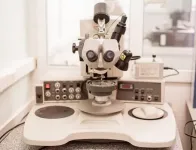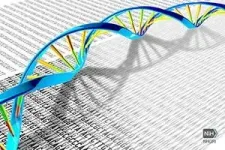New machine learning tool facilitates analysis of health information, clinical forecasting
2021-02-25
(Press-News.org) Clinical research requires that data be mined for insights. Machine learning, which develops algorithms to find patterns, has difficulty doing this with data related to health records because this type of information is neither static nor regularly collected. A new study developed a transparent and reproducible machine learning tool to facilitate analysis of health information. The tool can be used in clinical forecasting, which can predict trends as well as outcomes in individual patients.
The study, by a researcher at Carnegie Mellon University (CMU), appears in Proceedings of Machine Learning Research.
"Temporal Learning Lite, or TL-Lite, is a visualization and forecasting tool to bridge the gap between clinical visualization and machine learning analysis," explains Jeremy Weiss, assistant professor of health informatics at CMU's Heinz College, who authored the study. "While the individual elements of this tool are well known, their integration into an interactive clinical research tool is new and useful for health professionals. With familiarization, users can conduct preliminary analyses in minutes."
Time is a key part of clinical data that are collected in health care delivery. For example, during discussions of patients on rounds, in which doctors visit hospital patients to determine how they are doing, medical staff use visual aids that depict measurements of progression and recovery. Since electronic health records have been widely adopted, significant advances have been made in visualizing clinical data as well as in clinical forecasting. Yet a gap remains between the two.
TL-Lite begins with visualizations of information from databases and ends with visual risk assessments of a temporal model. Along the way, users can see the effects of their design choices through visual summaries at the levels of individuals as well as groups. This allows users to understand their data more completely and adjust machine learning settings for their analysis.
To show how the tool can be used, Weiss demonstrated the model with three electronic health records pertaining to three health matters: predicting severe thrombocytopenia (having abnormally low levels of platelets in the blood) during stays in the intensive care unit (ICU) among patients with sepsis, predicting survival of patients admitted to the ICU one day after admission, and predicting microvascular complications of type 2 diabetes among patients with the illness.
"The central goal of TL-Lite is to facilitate well-specified and well-crafted predictive forecasting, and this visualization tool is meant to ease the process," says Weiss. "At the same time, organizing the clinical data stream into meaningful visualizations can be aided by introducing machine learning elements. These approaches are complementary, so leveraging the benefits of one where another hits roadblocks results in a better overall solution."
INFORMATION:
The research was supported by the CMU Center for Machine Learning and Health, Amazon Web Services, and Microsoft Azure.
ELSE PRESS RELEASES FROM THIS DATE:
2021-02-25
Physicists from Russia, Chile, Brazil, Spain, and the UK, have studied how the magnetic properties change in 3D nanowires, promising materials for various magnetic applications, depending on the shape of their cross-section. Particularly, they more deeply probed into the Walker breakdown phenomenon, on the understanding of which the success of the implementation of the future electronics devices depends. The research outcome appears in Scientific Reports.
The cross-sectional geometry of a three-dimensional nanowire affects the domain wall dynamics and therefore is crucial for their control. In turn, managing the DW dynamics under various external conditions is necessary in order to realize the future electronics and computing devices, operating on new physical principles. ...
2021-02-25
Born in food web ecology, the concept of trophic levels -- the hierarchy of who eats who in the natural world -- is an elegant way to understand how biomass and energy move through a natural system. It's only natural that the idea found its way into the realm of aquaculture, where marine and freshwater farmers try to maximize their product with efficient inputs.
"It's often used as a measure of how sustainable it is to harvest or consume that species," said Rich Cottrell(link is external), a postdoctoral researcher at UC Santa Barbara's National Center for Ecological Analysis & Synthesis (NCEAS). As plants (level 1) become food to plant eaters (level 2), who in turn are consumed by carnivores (level 3) and so on, the amount of energy ...
2021-02-25
Hypertrophic cardiomyopathy (HCM) is a cardiovascular disease characterized by thickening of the left ventricle, otherwise known as the main squeezing chamber of the heart. HCM is best known for causing sudden death in athletes but can occur in persons of any age, often without symptoms. While frequently discussed in the context of genetics, most patients with HCM do not have a known genetic variant. Investigators from Brigham and Women's Hospital uncovered a means to study the complexity of this disease beyond the identification of individual genes. This new approach offers a path toward treating HCM using individualized medicine. ...
2021-02-25
While protons populate the nucleus of every atom in the universe, sometimes they can be squeezed into a smaller size and slip out of the nucleus for a romp on their own. Observing these squeezed protons may offer unique insights into the particles that build our universe.
Now, researchers hunting for these squeezed protons at the U.S. Department of Energy's Thomas Jefferson National Accelerator Facility have come up empty handed, suggesting there's more to the phenomenon than first thought. The result was recently published in Physical Review Letters.
"We were looking to squeeze the proton such that its quarks are in a small-size configuration. And that's a pretty tough ...
2021-02-25
A University of Oklahoma-led study published in 2020 revealed that both area and plant growth of paddy rice is significantly related to the spatial-temporal dynamics of atmospheric methane concentration in monsoon Asia, where 87% of the world's paddy rice fields are situated. Now, the same international research team has released a follow-up discussion paper in the journal Nature Communications. In this paper, the team identifies the limits and insufficiency of the major greenhouse emission database (EDGAR) in estimating paddy rice methane emissions.
"Methane emission from paddy ...
2021-02-25
EL PASO, Texas - A study by physiology researchers at The University of Texas at El Paso found that El Paso's stay-at-home ordinance due to the COVID-19 pandemic had positive effects on the health and well-being of the region's residents.
Despite a shutdown of gyms and movement restrictions on non-essential activities, residents increased their fitness activity and closely monitored their food and nutrition intake, said Cory M. Smith, Ph.D., assistant professor of kinesiology in UTEP's College of Health Sciences and the study's principal investigator.
More than 1,300 El Paso and ...
2021-02-25
Researchers at the University of Maryland School of Medicine (UMSOM) co-authored a study, published today in the journal Science, that details the sequencing of 64 full human genomes. This reference data includes individuals from around the world and better captures the genetic diversity of the human species. Among other applications, the work will enable population-specific studies on genetic predispositions to human diseases as well as the discovery of more complex forms of genetic variation.
Twenty years ago this month, the International Human Genome Sequencing Consortium announced the first draft of the human genome reference sequence. The Human Genome Project, as it was called, required 11 years of work and involved more than 1000 ...
2021-02-25
Psychologists have long found that people behave differently than when they learn of peers' actions. A new study by computer scientists found that when individuals in an experiment about autonomous vehicles were informed that their peers were more likely to sacrifice their own safety to program their vehicle to hit a wall rather than hit pedestrians who were at risk, the percentage of individuals willing to sacrifice their own safety increased by approximately two-thirds.
As computer scientists train machines to act as people's agents in all sorts of situations, the study's authors indicate that the social component of decision-making is often overlooked. This could be of great consequence, note the paper's authors who show that the trolly problem -long shown to be ...
2021-02-25
States regularly use administrative records, such as motor-vehicle data, in determining whether people have moved to prune their voter rolls. A Yale-led study of this process in Wisconsin shows that a significant percentage of registered voters are incorrectly identified as having changed addresses, potentially endangering their right to vote.
The study, published in the journal Science Advances, found that at least 4% of people listed as suspected "movers" cast ballots in 2018 elections using addresses that were wrongly flagged as out of date. Minority voters were twice as likely as white voters to cast their ...
2021-02-25
The COVID-19 virus holds some mysteries. Scientists remain in the dark on aspects of how it fuses and enters the host cell; how it assembles itself; and how it buds off the host cell.
Computational modeling combined with experimental data provides insights into these behaviors. But modeling over meaningful timescales of the pandemic-causing SARS-CoV-2 virus has so far been limited to just its pieces like the spike protein, a target for the current round of vaccines.
A new multiscale coarse-grained model of the complete SARS-CoV-2 virion, its core genetic material and virion shell, has been developed for the first time using supercomputers. The model offers ...
LAST 30 PRESS RELEASES:
[Press-News.org] New machine learning tool facilitates analysis of health information, clinical forecasting



